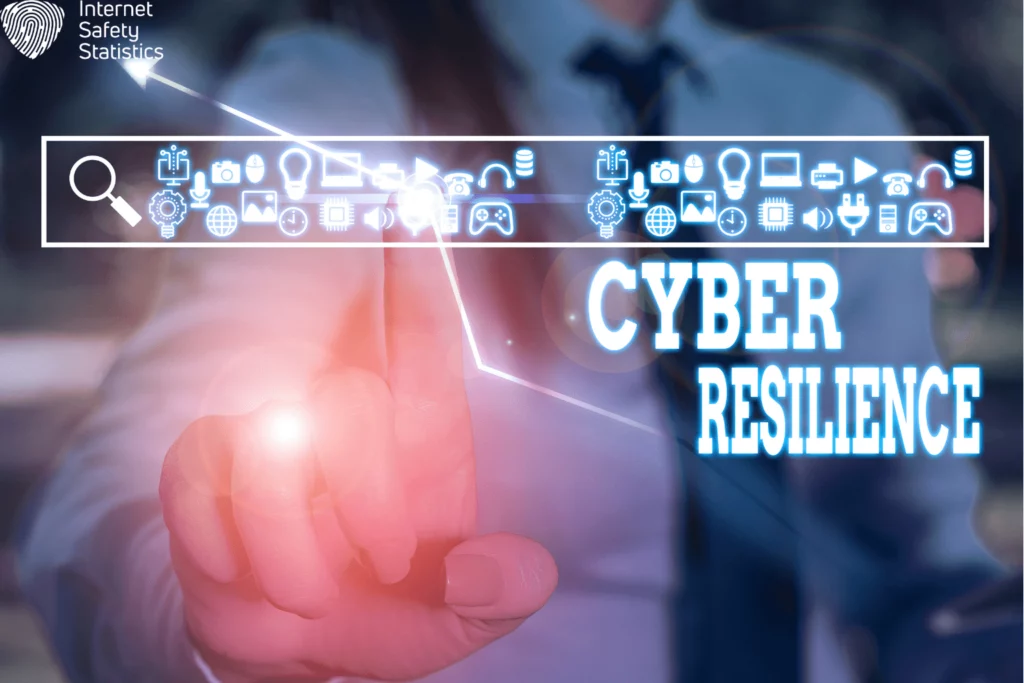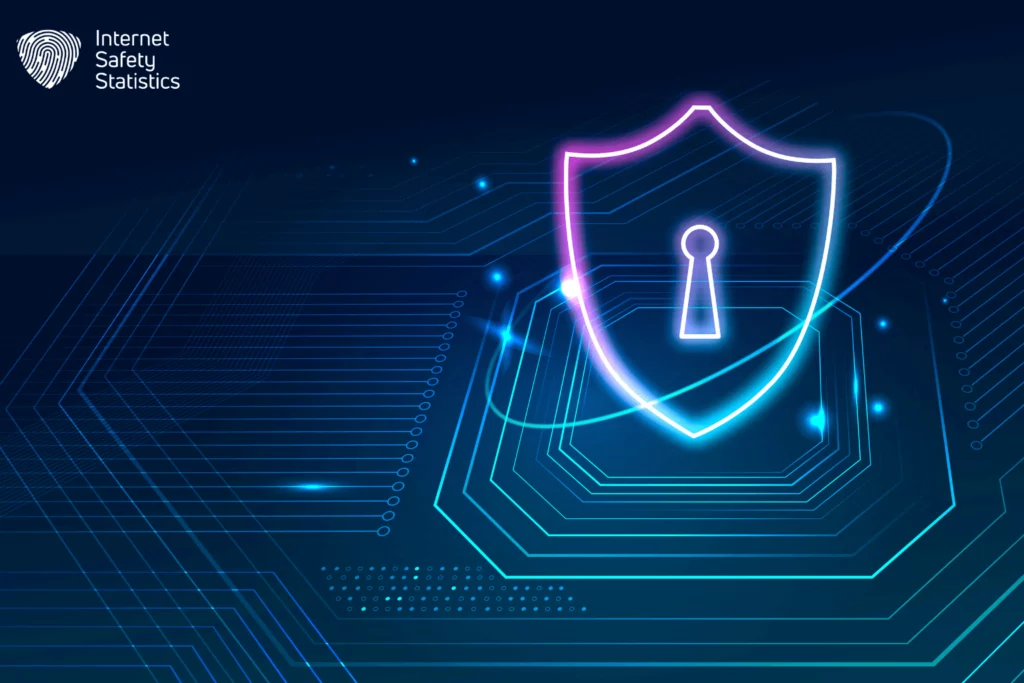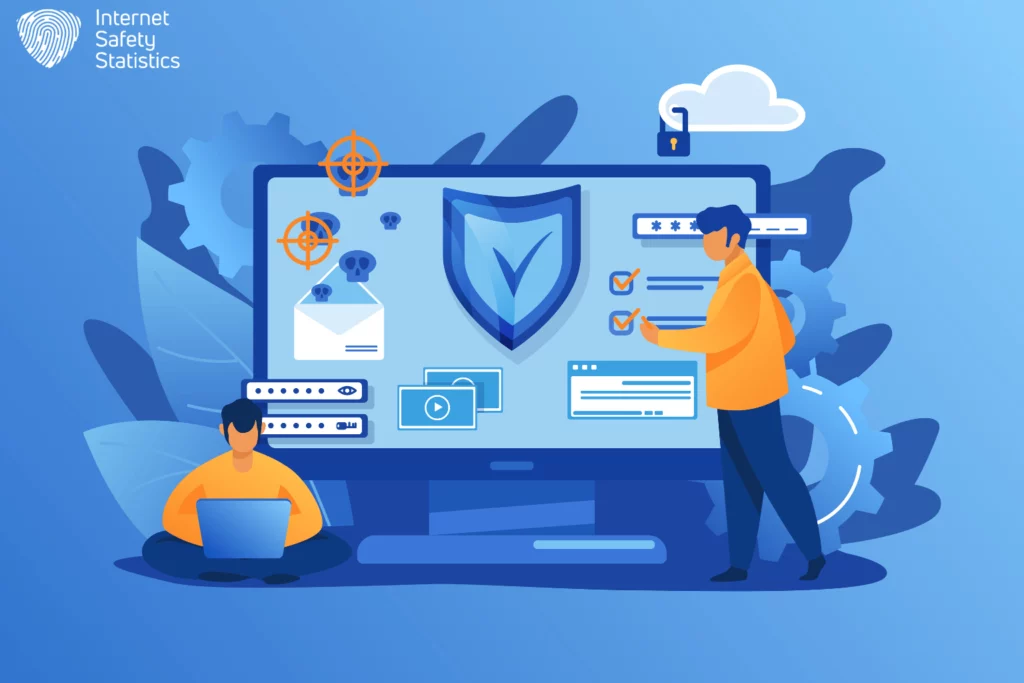
Cyber resilience, the digital world’s armour against the unceasing tide of cyber threats, stands as a beacon of preparedness and adaptability in the face of adversity. In an era where the virtual realm is the new frontier, characterised by relentless attacks and vulnerabilities, cyber resilience is the shield that organisations wield to bounce back from digital assaults with renewed strength. It’s not merely about preventing cyberattacks but also ensuring that the damage is minimised and the recovery is swift when a cyberattack occurs.
In this article, we dive deep into the realm of cyber resilience, shedding light on what it entails, its significance, and how organisations can embrace this concept to withstand the ever-evolving threat landscape. We’ll explore the core components of cyber resilience, strategies for building it, and its role in ensuring business continuity. By the end, you’ll have a clear understanding of how to fortify your organisation’s digital defences and navigate the turbulent waters of the digital age.
What is Cyber Resilience?
Cyber resilience is like the immune system for our digital world. It’s the capacity to prepare for, respond to, and recover from cyber threats—all while maintaining the integrity and functionality of our digital systems. Think of it as an unyielding digital armour that shields us against the unpredictable world of cyberattacks.
What are the Components of Cyber Resilience?
Cyber resilience is an ongoing process that requires commitment and adaptability. It involves many key components that work together to ensure an organisation’s ability to withstand, adapt to, and recover from cyber threats and incidents. By addressing the following components, organisations can better protect themselves against cyber threats, respond effectively when incidents occur, and maintain their ability to deliver essential services even in challenging cyber conditions. Let’s explore these components:
1. Risk Management: Understanding and assessing potential cyber risks is the foundation of cyber resilience. This involves identifying vulnerabilities and threats, evaluating their potential impact, and implementing measures to mitigate them.
2. Security Policies and Procedures: Establish clear and comprehensive security policies and procedures that define how the organisation will safeguard its digital assets and data. These policies serve as guidelines for employees to follow.
3. Incident Response Plan: Prepare for the worst by developing an incident response plan. This plan outlines the steps to take when a cyber incident occurs, helping to minimise damage and ensure a swift recovery.
4. Backup and Recovery: Regularly back up critical data and systems to prevent data loss during cyber incidents. Having a robust data recovery plan ensures that you can quickly restore operations.
5. Employee Training and Awareness: Human error is a common cybersecurity risk. Training employees about security best practices, how to spot phishing attempts, and the importance of data protection is essential for cyber resilience.
6. Technology and Tools: Invest in security tools and technologies, like firewalls, antivirus software, and intrusion detection systems. These tools act as a defence against various cyber threats.
7. Patch Management: Keep software and systems up to date with the latest security patches and updates. Cybercriminals often target vulnerabilities in outdated software.
8. Encryption: Use encryption to protect sensitive data both in transit and at rest. Encryption converts data into a secure code that can only be accessed with the appropriate decryption key.
9. Multi-Factor Authentication (MFA): Implement MFA to add an extra layer of security, requiring users to provide multiple forms of identification before granting access.
10. Vendor and Third-Party Management: Evaluate the security practices of vendors and third parties that have access to your data and make sure they meet your cybersecurity standards.
11. Continuous Monitoring: Consistently monitor your network for unusual activities and potential threats. Early detection can help prevent significant breaches.
12. Regulatory Compliance: Stay compliant with relevant cybersecurity regulations and standards. Compliance often includes security measures that enhance cyber resilience.
13. Business Continuity Planning: Develop a business continuity plan that outlines how the organisation will continue its essential operations in the face of a cyber incident. This ensures minimal disruption.
14. Collaboration and Communication: Foster collaboration among IT and security teams and maintain open communication channels to respond effectively to incidents.
15. Regular Testing and Drills: Test your incident response plan and security measures through simulations and drills. This practice helps identify weaknesses and improve your organisation’s readiness.
Benefits of Cyber Resilience

Cyber resilience is your digital guardian angel that keeps you, your data, and your business safe and sound. It’s your trusty shield against the online dragons and your secret sauce for peace of mind in our digital age. In the following lines, let’s talk about the benefits of cyber resilience. The perks of being cyber resilient are pretty enticing:
1. Safety and Security: Cyber resilience is like having a sturdy lock on your front door or a reliable alarm system for your home. It keeps your digital world safe from those sneaky online intruders.
2. Peace of Mind: Just as a good insurance policy gives you peace of mind, knowing you’re well-prepared for cyber threats helps you sleep better at night. You’re less worried about data breaches or cyberattacks.
3. Staying in Business: For companies, cyber resilience is like keeping the shop doors open. It ensures that business can carry on even if there’s a cyber hiccup.
4. Data Protection: Your precious data is like a treasure chest, and cyber resilience is the guardian that keeps it safe. This is especially important for personal info or sensitive business data.
5. Reputation Shield: Nobody likes a bad reputation. Cyber resilience makes sure your online image stays positive. It’s like protecting your good name in the digital world.
6. Quick Recovery: Cyber resilience helps you recover fast after a cyber incident. Like a trampoline, it gets you back on your feet sooner.
7. Avoiding Chaos: Cyber resilience is like having a firefighter in your digital home. It prevents small sparks from turning into massive fires. This way, things stay nice and orderly in your online world.
8. Saving Money: Cyber incidents can be costly, but cyber resilience helps you avoid big bills for cleaning up the mess after a cyberattack. Just as a healthy lifestyle can save on medical bills, cyber resilience saves on those “digital doctor” bills.
9. Learning and Growing: When you exercise, your body gets stronger. Cyber resilience is like an exercise for your digital world. It helps you grow and learn from past experiences so you’re even better prepared for future challenges.
What are the Common Cyber Resilience Threats?
Common cyber resilience threats encompass various malicious activities that can target organisations’ digital infrastructure, systems, and data. Being aware of these common threats is the first step in bolstering your organisation’s cyber resilience. Implementing robust security measures, conducting regular training, and staying updated on the evolving threat landscape are crucial components of a robust cyber resilience strategy. Here are some common cyber resilience threats:
1. Malware Attacks: Malware, short for malicious software, includes viruses, worms, Trojans, and ransomware. These programs can infiltrate systems, disrupt operations, steal data, or demand ransom.
2. Phishing: Phishing attacks use deceptive emails, messages, or websites to trick users into revealing sensitive information such as login credentials, financial details, or personal data.
3. Distributed Denial of Service (DDoS) Attacks: DDoS attacks overwhelm a system, network, or website with a flood of traffic, rendering it inaccessible. This can disrupt services, impact availability, and lead to financial losses.
4. Insider Threats: Insider threats involve employees, contractors, or business partners who misuse their authorised access to harm an organisation’s systems, data, or operations.
5. Data Breaches: Data breaches can result from various attacks or incidents, exposing sensitive information, including customer data, intellectual property, or proprietary data.
6. Zero-Day Vulnerabilities: Cybercriminals can exploit undisclosed or zero-day vulnerabilities in software or hardware. These vulnerabilities have no patches or fixes, making them particularly dangerous.
7. Social Engineering: Cybercriminals also use social engineering. They manipulate individuals, often through psychological manipulation, to divulge confidential information or perform actions that compromise security.
8. Third-Party Risks: Suppliers, vendors, or partners may introduce vulnerabilities into an organisation’s systems, especially when they have access to critical data or systems.
9. Data Exfiltration: Malicious actors steal data from an organisation, often with the intent to sell or use it for illicit purposes.
10. Advanced Persistent Threats (APTs): APTs are long-term, targeted attacks where adversaries gain unauthorised access to a network, exfiltrate data, and maintain persistence.
11. Software Vulnerabilities: Flaws in software can be exploited by cybercriminals to infiltrate systems. Regular software updates and patches help mitigate these vulnerabilities.
12. IoT (Internet of Things) Vulnerabilities: Devices in the IoT ecosystem, from smart appliances to industrial equipment, may have security weaknesses that cyber attackers can exploit.
13. Supply Chain Attacks: Threat actors can compromise the software or hardware supply chain to infiltrate systems and distribute malicious code.
14. AI and Deepfake Threats: The use of artificial intelligence and deepfake technology can make cyberattacks and social engineering more sophisticated and convincing.
15. Cloud Security Risks: While cloud services offer scalability and flexibility, organisations must ensure proper configurations and security measures to protect their data stored in the cloud.
How Does Cyber Resilience Work?
Cyber resilience is like having a well-prepared, well-equipped, and quick-thinking superhero squad for the digital world. They’re ready to fend off villains (cyber threats) and spring into action if the bad guys get through, ensuring that life goes back to normal as soon as possible. It’s all about preparing, protecting, and bouncing back when things go wrong in the online realm. Let’s break down how it operates:
1. Preparation
Think of this as the “preventing trouble” phase. Organisations, just like people, have to be ready. They prepare by identifying possible cyber risks. Imagine it’s like checking your home for weak locks or leaky windows before a big storm. For companies, this means understanding where their data and systems might be vulnerable.
2. Protection
This is like putting on armour before a battle. Organisations use security measures, like strong passwords, firewalls, and antivirus software, to shield themselves from cyber threats. It’s a bit like how we lock our doors and wear seatbelts to stay safe.
3. Detection
Even with all these defences, sometimes cyber threats sneak in. This is where detection comes in. It’s like having a smoke detector at home. When it senses smoke, it alerts you. In the digital world, systems are constantly looking for signs of trouble, like unusual activities or intruders.
4. Response
Just as we have a plan for fires or natural disasters, organisations have a plan for cyber incidents. When something goes wrong, they follow their “What to do” list. This might include isolating the issue, calling in experts, or telling the right people.
5. Recovery
Think of this as healing after an injury. Organisations work to get back to normal after a cyber incident. They might restore lost data, repair damaged systems, and learn from the experience to prevent it from happening again.
6. Learning and Improvement
Lastly, it’s important to learn from past incidents and get better. Imagine if we take a CPR class after a medical scare! Organisations do something similar by analysing what went wrong and figuring out how to do things differently in the future to avoid trouble.
Cyber Resilience vs Cybersecurity

In our increasingly interconnected world, the buzzwords “cybersecurity” and “cyber resilience” frequently make their way into conversations. But what does cyber resilience really entail? How can it safeguard us in an era where cyber threats lurk around every digital corner? Let’s break it down into digestible pieces.
Cyber Resilience vs. Cybersecurity
Cyber resilience is your castle, while cybersecurity is the moat and the guards. Cybersecurity focuses on preventing threats, while cyber resilience takes it a step further, ensuring you can keep going even if the castle walls are breached.
How to improve Cyber Resilience
Cyber resilience is all about being proactive, cautious, and prepared to keep your digital life safe and sound! Improving it is like making your home more secure. By following the below steps, you’re strengthening the locks on your digital doors, just as you would improve security in your own home. Here are some practical, human-friendly ways to do it:
1. Create Strong Passwords: Setting strong passwords is just like locking your front door. Use a mix of letters, numbers, and symbols, and avoid using easily guessable stuff like “password123.”
2. Update Regularly: Keep your software, apps, and devices updated. Like fixing a leaky roof, the updates patch vulnerabilities.
3. Backup Your Data: Make copies of your important stuff regularly. Imagine your data is like precious family photos; you’d want a backup in case something happens.
4. Educate Yourself: Learn about common cyber threats. It’s like knowing the neighbourhood and which streets to avoid. Knowledge is your best defence.
5. Use Security Software: Install good antivirus and anti-malware software. Think of it like having a security guard for your computer.
6. Limit Sharing: Be careful about what you share online. Share only what you’re comfortable with others seeing. Think of it as protecting your personal space.
7. Turn on Two-Factor Authentication (2FA): It’s like having two locks on your front door. With 2FA, even if someone guesses your password, they can’t get in without a second key.
8. Secure Your Wi-Fi: Make your Wi-Fi network password-protected. You wouldn’t want unwelcome guests in your home, right?
9. Be Aware of Phishing Attacks: Watch out for suspicious emails and messages. If it smells fishy, it probably is! Just like you’d be cautious about a stranger knocking on your door.
10. Have an Incident Response Plan: Have a plan for what to do if something goes wrong. It’s like having a fire drill, so you know what to do in case of a real fire.
11. Have Regular Checkups: Regularly scan your devices for malware. Think of it like visiting the doctor for a health checkup.
12. Train Your Employees: If you’re a business owner, ensure your employees are aware of cyber threats. It’s like teaching your team to lock up the office before leaving.
13. Seek Professional Help: Sometimes, you need a security expert, just like calling a plumber for a leaky pipe. Don’t hesitate to consult an expert when needed.
14. Keep Cool: If something does go wrong, stay calm. It’s easier to handle a situation when you’re not panicking, just like dealing with a crisis at home.
15. Learn from Mistakes: Cyber resilience is like riding a bike. You get better by learning from your falls. When something goes wrong, see what you can do to avoid it in the future.
Like any skill, cyber resilience can be honed. Regular training for your cyber knights (staff), implementing robust defences (firewalls, encryption), and having a plan in case the enemy gets inside will help you become a cyber resilience ninja.

In Conclusion
Cyber resilience is our digital armour against the ever-present cyber threats. It’s about being prepared, staying vigilant, and always being ready to recover. It’s not a matter of if, but when the next cyber battle will occur. So, arm yourselves and stand strong in the face of the digital storm!
